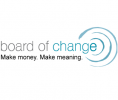Blog Post: Mind the Gap
DESIGN TO IMPROVE LIFE
We seem to have so many things in place to improve the life conditions of more and more people, especially those in poverty: design students are becoming increasingly interested in Social Design, design educators themselves are finally realising that their students want more socially- and environmentally-oriented projects, and design competitions are finally incorporating a sustainability element into their criteria and categories.
Have a look at the INDEX: finalists for example and you’ll see what I mean: a superb array of solutions that address crucial issues relating to how people cook their food, avoid disease, use waste, and help each other. These types of solutions become more intelligent and more pleasing, more wide-ranging, more educative, and more appropriate year after year – yet we still have a gap, a vast gap between idea and actual implementation. It seems to be exactly the same problem as with development aid: money abounds, but it never seems to reach the right place and the right community resulting in long-term improvement in their quality of life and self-sustainment. We therefore still seem to be at an absolute primitive stage of development in the Social Design and Design-for-Sustainability agenda.
What can we do about this? How can we distribute and mainstream these truly needed solutions? Luckily there seem to be a few options: winning competitions such as INDEX: or the Aspen Design Challenge ensures that at least one solution goes into production and hopefully into more widespread adoption. Winning enough votes on ideablob or a contest on Justmeans has helped boost a couple of friends’ projects into implementation as well as earning them publicity.
But how about at the educational, institutional level? Shouldn’t student projects be taken right to the endpoint – put in the hands of the end user? Can we lead our projects by introducing our enthusiastic students to key stakeholders, to more readily ensure that their ideas will be used in real life, and hopefully spread? Can we help our students actually establish companies, agencies, or organisations that will take their concepts right into production and into the field? And perhaps even most importantly, can we start helping those impoverished communities to train their own designers and sustainable solution developers, so solutions are home-grown, appropriate technologies most suited to their local context?
It’s frustrating to see that there is so much money in the world, so much food, so much creativity – and to have it all so unevenly distributed even after all these decades of hard work by well-meaning folk.... This does not have to mean that we need six more planets of resources to fuel a consumption-oriented lifestyle for all – just appropriately directed actions that help lift more people into a more comfortable and safer standard of living.
But I guess that goes against the agenda of many wealthy governments and the World Bank in the end, which seems to verify that incremental, grassroots steps may be the only way forward. Enabling solutions and enabling platforms: here is where I personally will be watching the peer-to-peer megatrend very closely.
___________________________________________
Category:


































